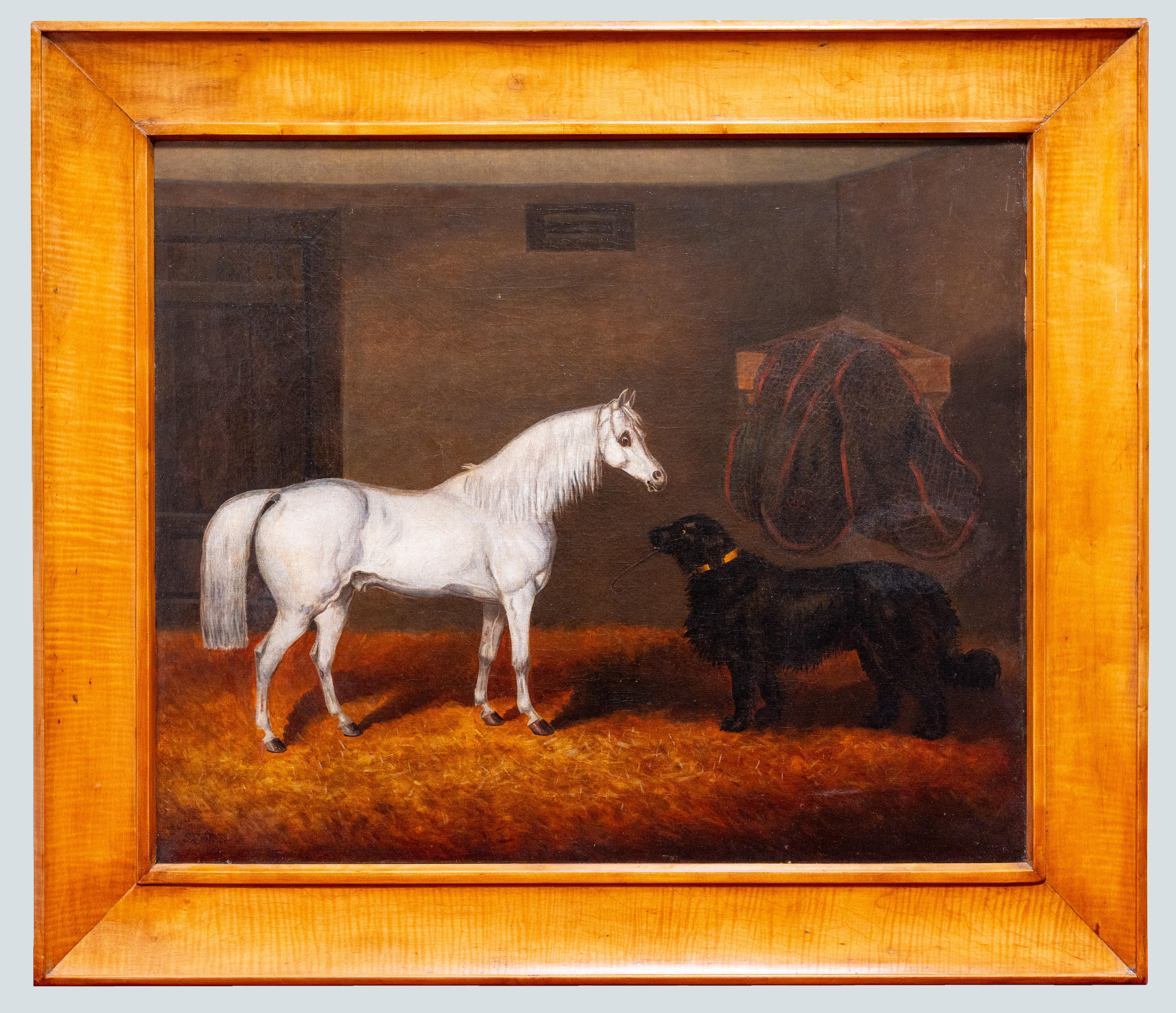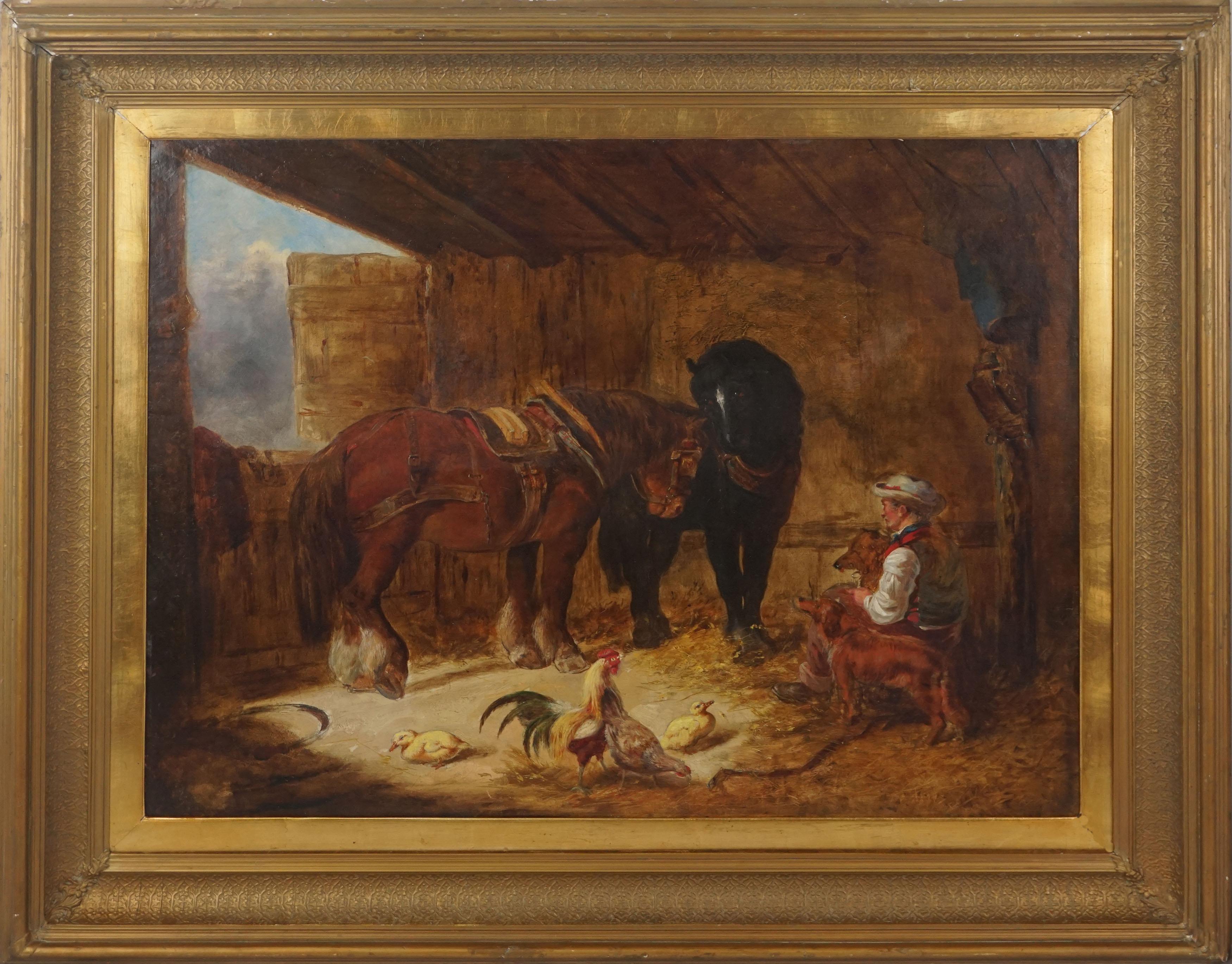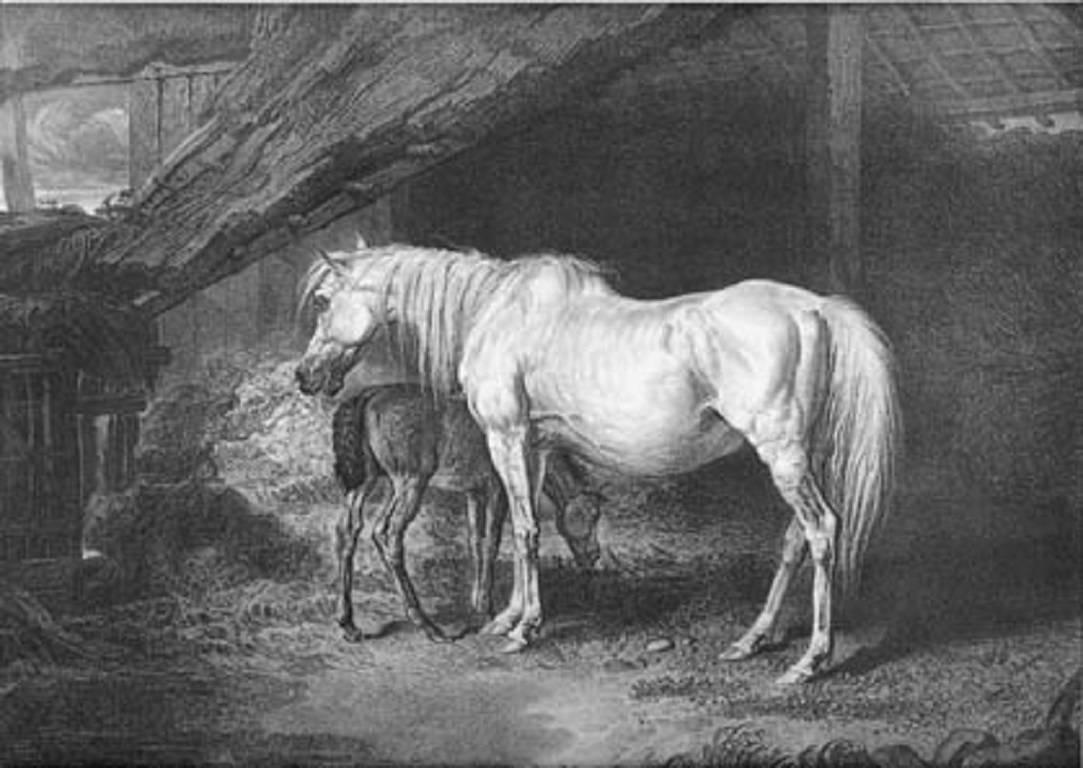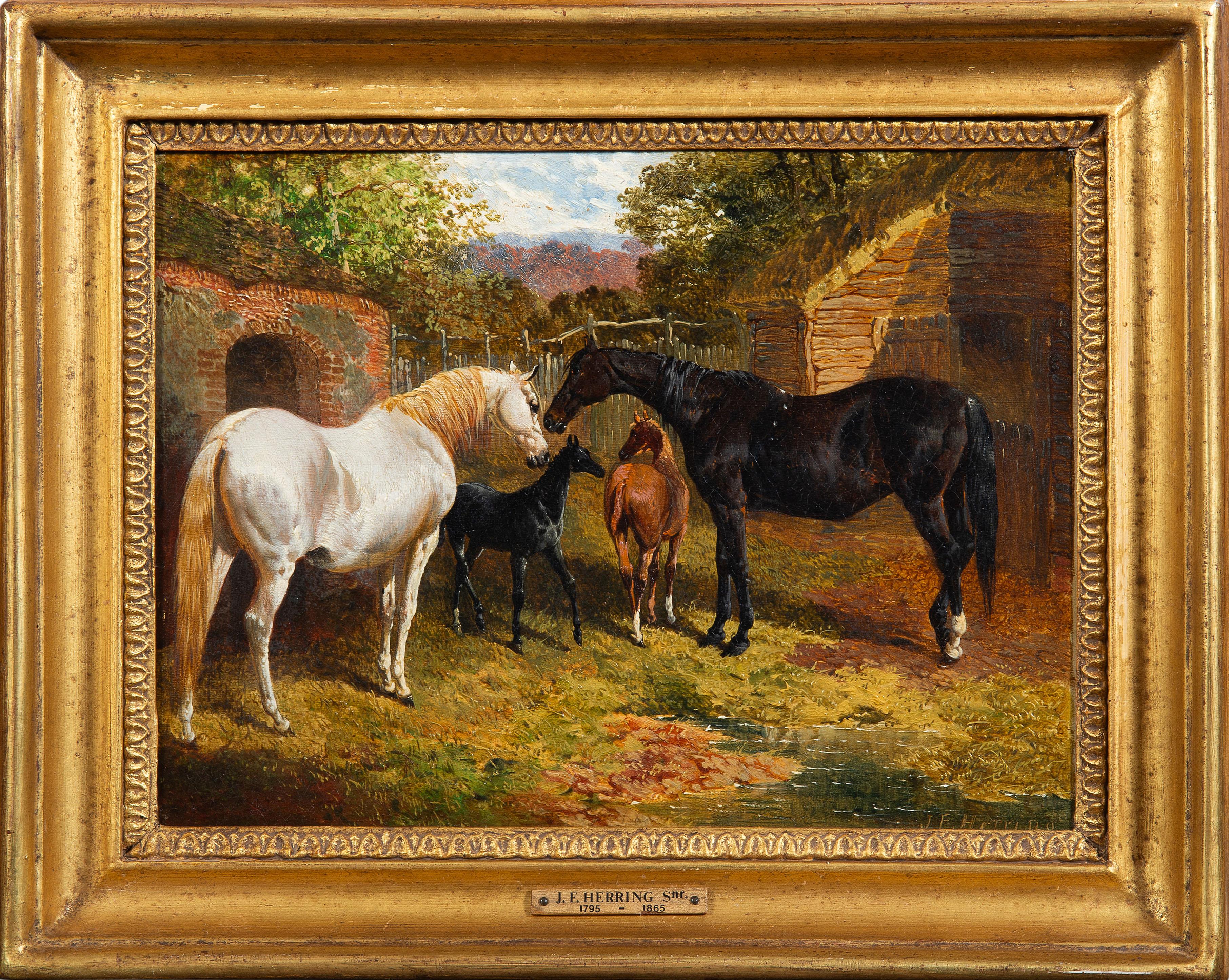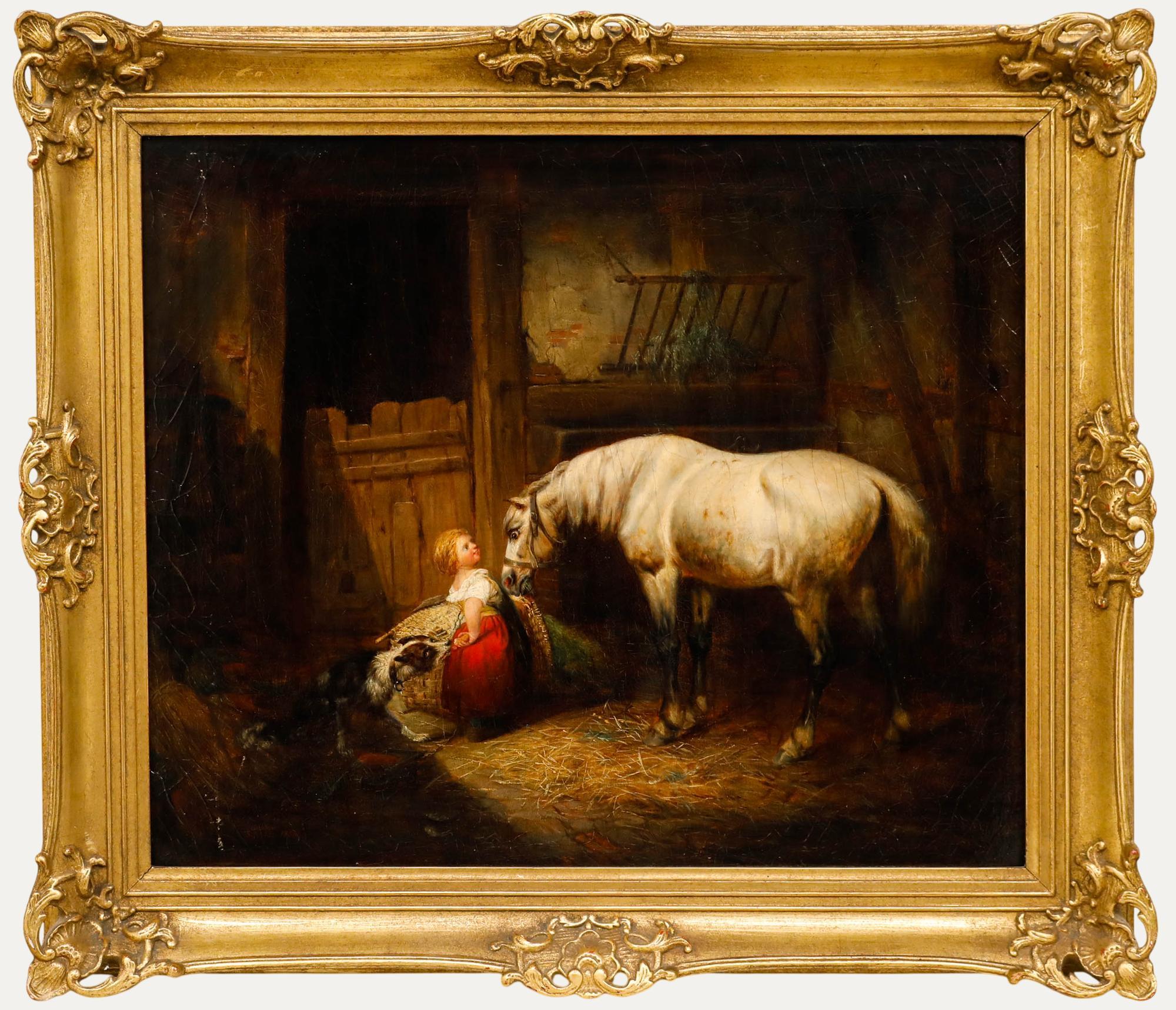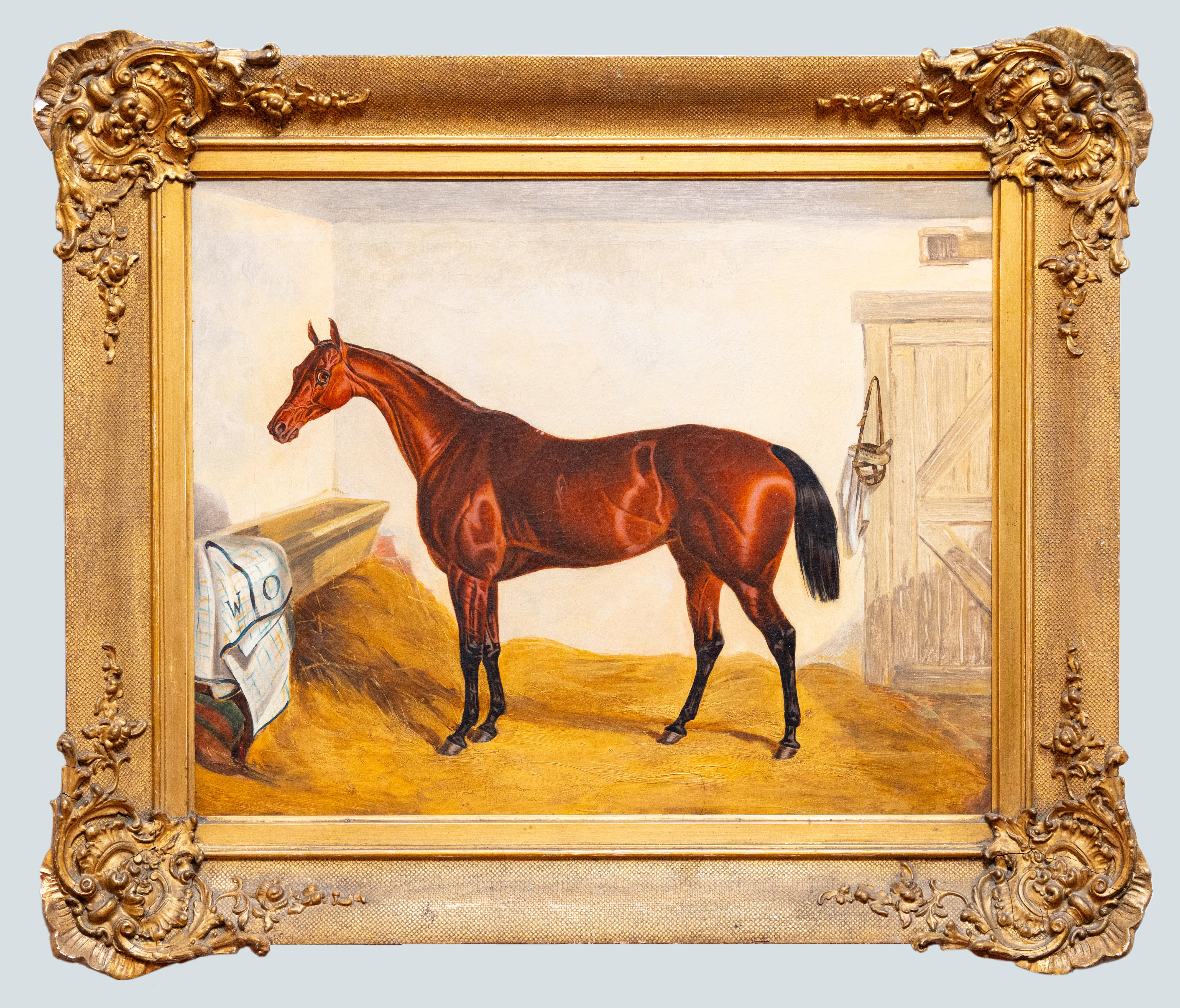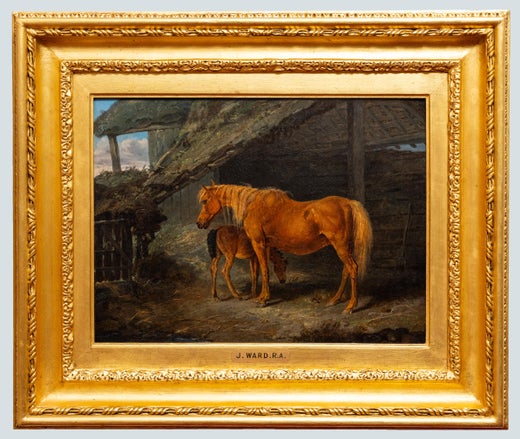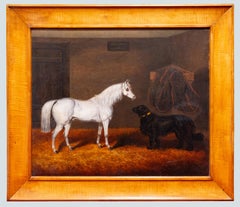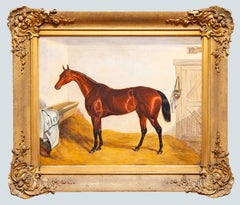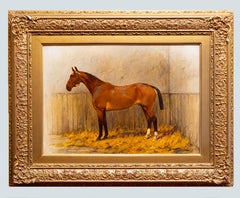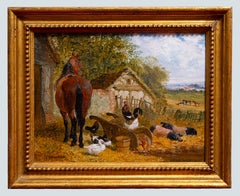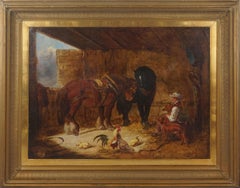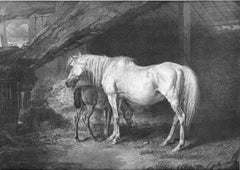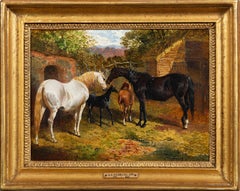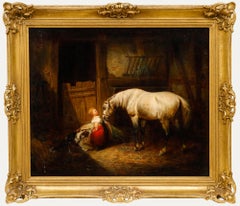James WardMare and Foal in a Stable Interior, James Ward RA (1769 - 1859)
About the Item
- Creator:James Ward (1769 - 1859, English)
- Dimensions:Height: 22.05 in (56 cm)Width: 25.99 in (66 cm)
- More Editions & Sizes:56cm L x 66cm W canvas only without framePrice: $8,265
- Medium:
- Period:
- Condition:
- Gallery Location:GB
- Reference Number:Seller: 581stDibs: LU2841215850402
James Ward
James Ward was influenced by many people, but his career is conventionally divided into two periods: until 1803, his single greatest influence was his brother in law George Morland; from that time, it was Rubens. From 1810 or so, Ward started to paint horses within landscapes; slightly later, he turned to very large-scale landscapes, of which Gordale Scar (Tate, London), completed in 1814 or 1815 and depicting Gordale Scar (Yorkshire) as an example of the sublime, is considered his masterpiece and a masterpiece of English Romantic painting. He was one of the outstanding artists of the day, his singular style and great skill set him above most of his contemporaries, markedly influencing the growth of British art. Regarded as one of the great animal painters of his time, Ward produced history paintings, portraits, landscapes and genre. He started as an engraver, trained by William, who later engraved much of his work. The partnership of William and James Ward produced the best that English art had to offer, their great technical skill and artistry having led to images that reflect the grace and charm of the era. He was admitted for membership into the Royal Academy in 1811. One of Ward's best-known paintings, The deer stealer was commissioned in 1823 for the sum of 500 guineas by Ward's patron Theophilus Levett. When the work was finished, Levett pronounced himself delighted with the results and consequently raised the remuneration to 600 guineas. Subsequently Ward was said to have been offered 1,000 guineas for the painting by 'a nobleman,' which he declined. The painting now hangs at Tate in London.
- ShippingRetrieving quote...Shipping from: United Kingdom
- Return Policy
More From This Seller
View AllEarly 19th Century Animal Paintings
Oil
Late 19th Century Animal Paintings
Canvas, Oil
Early 20th Century Animal Paintings
Canvas, Oil
19th Century Animal Paintings
Oil, Board
19th Century Animal Paintings
Canvas, Oil
19th Century Animal Paintings
Canvas, Oil
You May Also Like
19th Century English School Animal Paintings
Masonite, Oil, Linen
19th Century Romantic Animal Prints
Lithograph
19th Century Victorian Animal Paintings
Oil
Mid-19th Century Figurative Paintings
Oil
1890s Realist Animal Paintings
Canvas, Oil
1840s Victorian Animal Paintings
Oil
